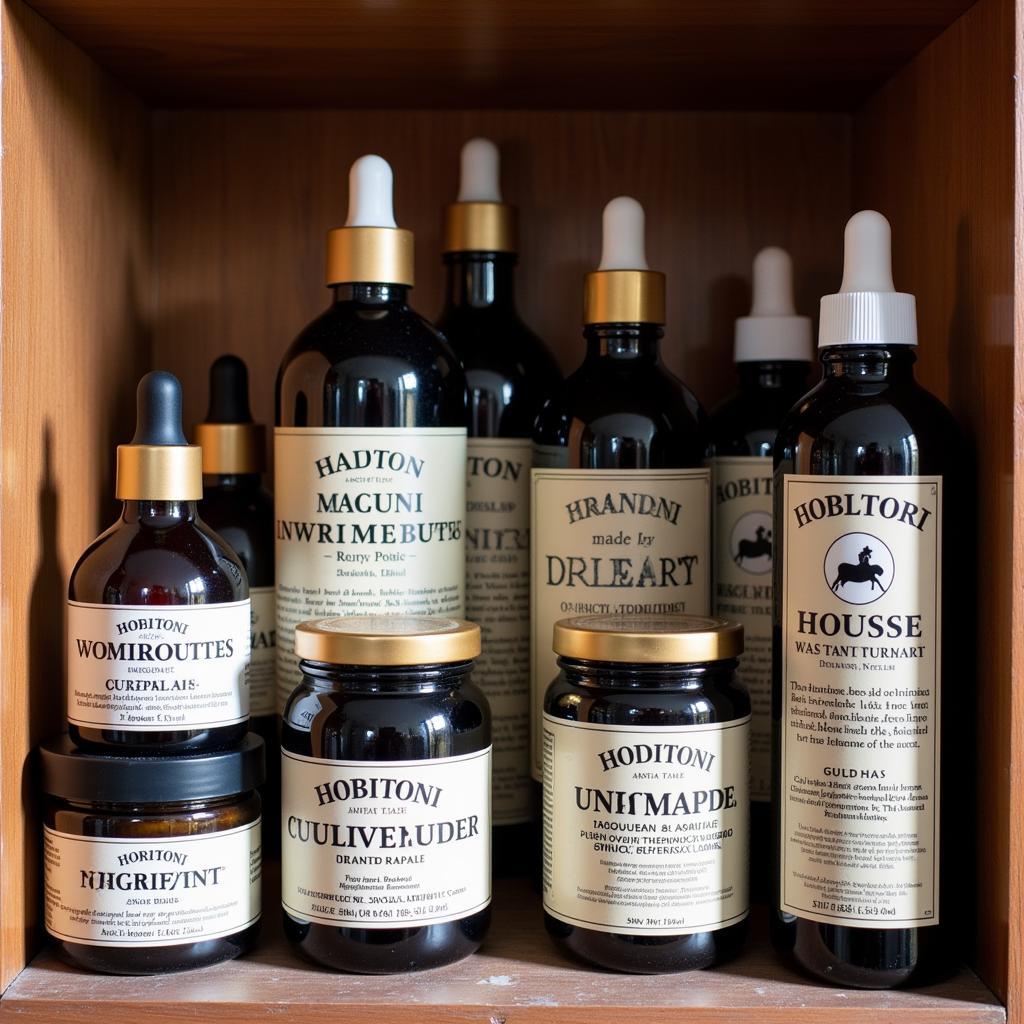Liniment For Horses is a topical application designed to soothe sore muscles and reduce inflammation. Whether your equine partner is a seasoned athlete or enjoys leisurely trail rides, they can benefit from the use of liniment. This guide will explore the benefits, types, and how to apply liniment safely and effectively.
Understanding Liniment for Horses
Liniment is a liquid or gel applied directly to the horse’s skin, typically on their legs, back, or other areas of muscle soreness. They work through a combination of ingredients that create a warming or cooling sensation, increasing blood flow and reducing inflammation.
Key Benefits of Using Liniment:
- Pain Relief: Liniments contain analgesics that help alleviate pain in muscles and joints.
- Reduce Inflammation: By increasing blood circulation to the affected area, liniment helps reduce swelling and inflammation.
- Promote Healing: Improved blood flow delivers oxygen and nutrients to damaged tissues, accelerating the healing process.
- Warm Up Muscles: Some liniments generate warmth, preparing muscles for work and reducing the risk of injuries.
- Cool Down Muscles: Cooling liniments help reduce muscle soreness and prevent inflammation after strenuous activity.
Types of Liniment for Horses
Horse liniments come in various formulations to cater to different needs. The two primary types are:
- Cooling Liniments: These typically contain ingredients like menthol or alcohol, providing a cooling sensation upon application. Cooling liniments are ideal for use after exercise to soothe sore muscles, reduce inflammation, and prevent swelling.
- Warming Liniments: Formulated with ingredients like capsaicin or wintergreen oil, warming liniments create a heating sensation, increasing blood flow to the area. They are effective for warming up muscles before exercise, relieving stiffness, and easing chronic pain.
When selecting a liniment for your horse, consider their individual needs and the intended use. Always consult with your veterinarian for recommendations and guidance on choosing the right liniment.
Applying Liniment Safely and Effectively
While liniments offer numerous benefits, proper application is crucial to ensure safety and efficacy. Follow these steps:
- Clean the Area: Before applying any liniment, ensure the horse’s coat is clean and dry. Use a soft brush to remove dirt, sweat, or debris.
- Wear Gloves: Always wear gloves when handling liniment to avoid skin irritation or accidental ingestion.
- Patch Test: Before applying liniment to a large area, perform a patch test on a small, inconspicuous skin patch to check for any adverse reactions.
- Apply as Directed: Follow the manufacturer’s instructions for application amount and frequency.
- Massage Gently: Using circular motions, massage the liniment into the horse’s coat. Avoid applying excessive pressure.
- Wash Hands: Thoroughly wash your hands after applying liniment.
Precautions and Potential Side Effects
- Sensitivity: Some horses may be sensitive to certain liniment ingredients. If you notice any redness, swelling, or irritation, discontinue use and consult your vet.
- Ingestion: Store liniments safely out of reach of horses to prevent accidental ingestion, which can be toxic.
- Open Wounds: Avoid applying liniment to open wounds or irritated skin.
- Competition Use: Be aware of competition rules regarding liniment use, as some ingredients may be prohibited.
Choosing the Right Liniment for Your Horse
With a wide array of liniments available, choosing the best one for your horse can be overwhelming. Consider these factors:
- Type of Soreness: Determine if the soreness is muscle-related or joint-related, and choose a liniment designed for that specific need.
- Cooling or Warming: Decide whether your horse would benefit from a cooling or warming sensation.
- Ingredients: Check the ingredient list carefully, ensuring your horse is not allergic or sensitive to any components.
“It’s essential to remember that liniment is not a substitute for proper veterinary care. If your horse experiences persistent lameness or soreness, consult your vet to rule out any underlying medical conditions,” advises Dr. Emily Carter, a renowned equine veterinarian with over 20 years of experience.
 Assortment of Horse Liniment Bottles
Assortment of Horse Liniment Bottles
Conclusion
Liniment can be a valuable tool in your horse care arsenal, providing relief from muscle soreness, reducing inflammation, and promoting healing. By understanding the different types of liniment, following safe application practices, and considering your horse’s individual needs, you can effectively incorporate this topical treatment into their care routine.
Remember, consulting with your veterinarian is crucial for choosing the appropriate liniment and addressing any underlying health concerns. With proper care and management, you can help your equine companion enjoy a long, healthy, and active life.
Need assistance with choosing the right liniment for your horse?
Contact us!
Phone: 0772127271
Email: [email protected]
Or visit us: QGM2+WX2, Vị Trung, Vị Thuỷ, Hậu Giang, Việt Nam.
Our dedicated customer care team is available 24/7 to answer your questions and provide guidance.